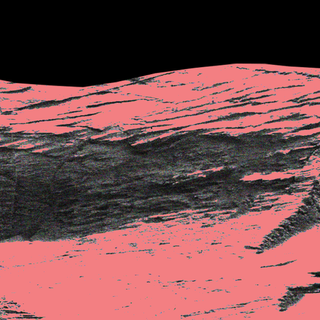In the depths of Central Australia, a team of geologists made a discovery that could impact our understanding of both ancient, and potentially, extraterrestrial life. They found crystals of sodium chloride or rock salt — also known as halite — dating back to 830 million years, possibly containing traces of life in the form of prokaryotes and algae. While there is no confirmation yet as to whether these organisms are alive or not, scientists consider it a real possibility.
This is significant: Until now, the oldest microorganisms found alive were 250 million years old.
What we do know so far, is that the crystals contain “fluid inclusions” — these are small amounts of the moisture trapped within crystals just as they form inside a saltwater environment. These pockets of fluid trapped inside crystals could then tell us a lot about the region’s atmosphere, ecosystem, and life itself from 830 million years ago.
All this means that we now have new ways of studying ancient sediments for life. This finding expands the scope of study to include any ancient sediments — from anywhere — as “potential hosts” for life.
“This discovery shows that microorganisms from saline depositional environments can remain well preserved in halite for hundreds of millions of years and can be detected in situ with optical methods alone,” the paper, published in Geology, noted. In other words, organisms otherwise perceived to be dead can survive in certain conditions; their discovery using non-intrusive methods can change our understanding of “inhabitable” planets.
Related on The Swaddle:
Scientists Discover 15,000‑Year‑Old Viruses in Melting Tibetan Glaciers
Even Mars, for instance, has been widely reported to have been inhabitable for millions of years a long time ago. Mars rovers have also found ancient beds of what used to be lakes; and the discovery of salt was the key to unlocking this piece of Martian history. Finding potentially living microorganisms trapped in the salt back at home, then, paves way for probing a little deeper into salt reserves from out of space.
The other special feature of the study was that geologists used optical methods to study the inside of the crystals. They didn’t have to disturb or disrupt the composition of the crystal or its inhabitants by physically poking and probing inside. They used a technique called ultraviolet-visible (UV-vis) petrography.
The fluorescence of the organic matter inside also had its own stories to tell: while some signified decay, others showed signs of “unaltered” organic material.
“It has been suggested that radiation would destroy organic matter over long time periods… microorganisms may survive in fluid inclusions by metabolic changes, including starvation survival and cyst stages, and coexistence with organic compounds or dead cells that could serve as nutrient sources,” the researchers wrote. The relatively undisturbed findings speak to the durability of life in limbo — and could further tell us about the sheer magnitude of life’s possibilities anywhere and across time itself.




